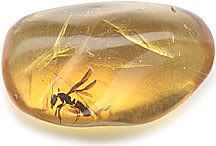Craig Hardgrove
Here I am, trying to encourage scientists and video game developers to collaborate, and I go writing this… but I just can’t help myself. Stick with me, please, because I’m really not trying to shoot myself in the foot. I think by the end I’ll have a salient point….

The Science and Entertainment Exchange links up entertainment professionals with scientists who can help them with scientific content. It’s awesome!
There is a fantastic program called the Science and Entertainment Exchange which is run by the National Academy of Sciences. The program partners interested scientists (pro-bono work only) with content creators (TV, film and now video games) interested in incorporating some science into their work. Before I got the idea to start Astrum Terra, I submitted my name to them to be a scientific consultant. The Exchange is a great way to gain experience giving scientific advice to anyone creating content or media that needs a bit of help with a particular story point or establishing believable scientific content. Their primary focus is on TV and film, which has been bread and butter of (for pay) scientific consulting. Keep in mind, getting paid to do science consulting is pretty rare anyway and making a living off of it is probably even more rare. Regardless, the Science and Entertainment Exchange is an awesome way to encourage smaller creative operations with much less disposable income to partner with a scientist. It’s also a great way for scientists to interact with the entertainment industry. But why is the focus so heavy on TV and film? Aren’t video game revenues pretty darn high at this point, and aren’t video game studios becoming pretty large operations? I did some research. According to this article, video game industry revenues were $22 billion in the US in 2008, while the global revenue for the film industry was $27 billion. The current estimate for worldwide video game revenues is somewhere around $60 billion and it is widely accepted that the video game industry has surpassed the movie industry in terms of total revenue. So if the TV and film industry have been using science consultants for a while now, why not video games?
I don’t know the reason, but I have a hunch, and I’m not just saying this to be nice… but I think it’s because the people that make video games are really freaking smart! They know how to use the internet, read books, and generally look up the story information they need about, say, quantum mechanics or robotic arms. The people that make video games are smart enough to know that a lot of the information you’re going to get from a science consultant is available on the internet, for free, and they know enough to read it, digest it and incorporate it in some form into their game. Whatever form science consulting takes for the video game industry, if it takes a form at all, it will not be the traditional model of passing along some science-y words and hanging up the phone. It’s going to need to be creative, collaborative, and most importantly, unique. Because you’re not going to impress a video game developer by putting on a lab coat and flashing a spectrometer at him/her… you need to be some sort of scientist-artist, adding a little bit of science wrapped around the main plot, or pointing out areas where some real data could add to the game world, and you need to know where to back off and let them do what they do best. You need to know a lot about how video games work, how game mechanics might be improved by adding a realistic physical effect. You need to know something about what makes video games fun, and where some bit of real science might create a more immersive environment for the player. You can’t just walk in with your science-hat, and toss around some science-words, and ride off on your science-horse…
“There ya go, Betty. There’s that quick science injection you asked for. Is there anything else I can do for you?” “Why yes, there is. Is there anything you can do to dull the burning from all that confusing jargon at the injection site?”
Anyway, I wrote all of that because I wanted to bring you along with me up to this point. I wanted you to understand how I’m viewing scientific consulting, because yesterday I came across this article on the Science and Entertainment Exchange website. The producers of the show Terra Nova requested the expertise of a geologist and were put in touch with Dr. Kevin Grazier, a planetary scientist at the Jet Propulsion Lab. According to Dr. Grazier, they asked him for,
“…some geologic concepts that were close enough in their ultimate outcome to be mistaken for one another, but disparate enough to be contradictory.”
The episode’s plot called for a famous geologist to come through the portal to Terra Nova, only unbeknownst to everyone he was not the famous geologist, but an impostor. So the writers thought it would be cool to have the impostor’s dastardly-self get exposed as an impostor by incorrectly describing a geologic phenomena. Sounds good, I like it. Now, I’m not going to say anything about this before you read it, but here is what Dr. Grazier suggested the show use (The faux-geologist impostor’s name is Dr. Horton).
“The impostor Dr. Horton begins a discussion about serpentinization (a geochemical process by which water alters basaltic igneous rock into ‘slipperier’ serpentine, thus lubricating the slabs on either side of a fault) when Maddy is actually referring to the real Dr. Horton’s writings on slab pull (a geophysical effect in which the weight of a descending subducting slab of crust speeds plate motion).”

“I told you not to try and cram another pterosaur into that box… you’ve seen what happens when they’re overpressurized!” “I told you I don’t understand any of those damn science words!!!!”
Guess what? The producers of the show didn’t include it in the final cut. I’m sure you are saying to yourself, “Really?! I was sure that the Terra Nova audience would be enthralled by the possibilities of slab pull induced serpentinization.” In fairness, I don’t know what the show’s dialogue actually said, and it may be that their intention was just to blind the audience with science-words (which, for the record, I feel has a totally appropriate time and place).
So am I really all that upset by this? No, because I like that shows are trying to use science and I really like that caring people like Dr. Grazier are putting their time and effort into trying to include real science in TV and film. My point is that, although these concepts are real scientific phenomena, the suggested science would be heard by the audience as nothing more than techno-babble. They might as well have been inductively-coupling the dilithium crystals to Data’s positronic matrix so the Enterprise could perform a Riker Maneuver out of the negative space anomaly.
*slow clap*
Thank you.
But in all seriousness, the concepts addressed in the proposed Terra Nova plot (serpentinization and slab pull) aren’t that difficult to explain in plain english. And you know what’s great about describing things in plain english? You don’t have to use words like serpentinization and slab pull. The following wouldn’t fly in a discussion amongst scientists, but if you’re addressing, say, the audience of Terra Nova I’d suggest something like this instead:
“The impostor Dr. Horton begins a discussion about the alteration of minerals in volcanic rocks when they are exposed to water, when Maddy is actually referring to the real Dr. Horton’s writings on the increasing speeds of moving tectonic plates.”
Yeah, it doesn’t sound as badass, right? I didn’t blow you away with amazing science, I know, and I’m very sorry. But I told you the same things and I didn’t make you feel dumb. Sure some details are lost in my version, but there’s less jargon. I would hope that most people have some idea about the words I used… in fact, the only ones people might have trouble with are “tectonic plates” and “volcanic”, but I think most people have, at the very least, a vague picture of these concepts.

Remember this from school? Ben remembers….
This seemingly more simple explanation is more likely to connect with the audience. If you address your audience like they’re intelligent, try to not talk above their heads, and use scientific concepts in a way that’s familiar, you might just intrigue them into being interested in science by sparking that part of the brain that hasn’t thought about “tectonic plates” since high school. That doesn’t happen when you say the word “serpentinization” to someone. What does happen is that the audience says to themselves, “I have no idea what that guy just said, but scientists much be a lot smarter than me.” The truth is, there are a lot of smart people doing science, but that doesn’t mean the people who aren’t doing science aren’t capable of understanding what scientists are doing. Some really famous scientist-type guy named Albert Einstein once said, “If you can’t explain something simply, you don’t understand it…” And he invented general relativity, so naturally, he must have thought that general relativity could be explained simply. I bet he’s right. I know I can’t explain it simply, but that’s because I don’t understand it. I can understand the desire to use specific terms when talking about science, because on some level science can be about classification, however, it’s important to keep the big picture in mind, and why there is a term for something in the first place, because before that term existed there was a way to describe the phenomena without using that term… the word or definition just makes it quicker to say. But anyway, I’m seriously digressing and this topic is probably less about science and video games and more about communicating science.
I don’t yet know if scientists and game developers will work side by side, but I think they should (and I’ll give some examples in the future of where this is already happening). This type of collaboration is critically important for the future of science in video games. The key point, however, is that computer programmers and game developers already think like scientists, so scientists working with them need to speak and collaborate with them as equals. And likewise, scientists need to contribute to game development as part of the team, not as an outsider looking in.











